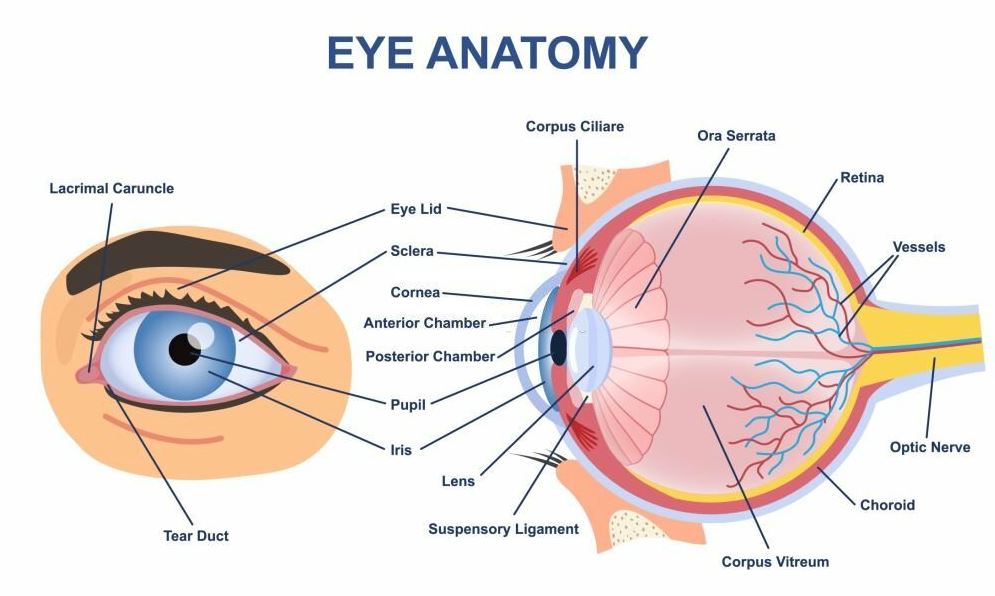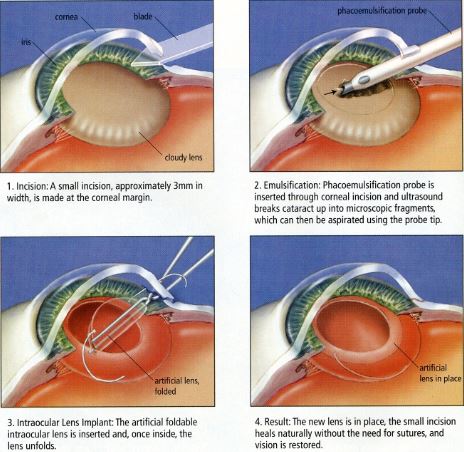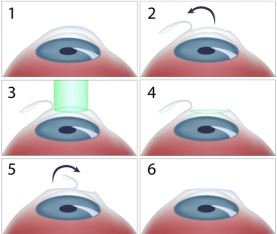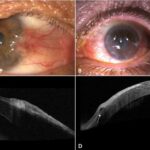
Despite all the right things the eye is capable of, it is still far from perfect. There are a wide range of conditions that can affect your eye health but the good news is that there are quite several ways to correct most of these conditions, and two common and popular correctional methods are Cataract Surgery and LASIK.
Often when discussing cataract surgery with patients, they ask if LASIK is going to be performed on their eyes. So what exactly is the difference between cataract surgery and LASIK? Before we review this question, let us understand the anatomy of the eye and which parts we perform the aforementioned surgeries.
With reference to the picture below, the cornea is the transparent spherical tissue in the ‘front’ of the eye. It can be likened to the windscreen of a car. Behind the cornea is the iris which gives ‘color’ to the eye. Due to the transparent nature of the cornea when we see through, the iris is what we are looking at and the iris comes in different colors including brown, grey, and blue. The iris has a hole called the pupil, think of it more like the hole in a doughnut. After the iris, is a crystalline lens. The crystalline lens is clear and transparent especially when you are young. Between the cornea and the lens is a fluid called aqueous humor. An important mention of the anatomy of the eye is the limbus (not illustrated in the picture). The limbus is where the cornea and the sclera (white part of the eye) meet. When looking directly into someone’s eye, it is the circumference where the colored part and the white part meet.

Understanding Cataract Surgery
A cataract is when the clear crystalline lens of the eye becomes cloudy mostly due to aging. The clouding happens gradually and mostly starts from age 45. Conditions like diabetes can speed up the clouding process. Although it primarily affects older individuals, younger people can also experience it through injuries, infections, or even at birth (congenital cataracts). People with cataracts can experience the following symptoms:
- Clouded or foggy or blurry vision
- Frequent glaring and sensitivity to light
- Needing a bright light to read especially at night
- The presence of a ‘rainbow’ around lights
- Difficulty seeing clearly at night
- Fading and/or yellowing of colors
- Double vision
- Changing your glasses more often than usual
So what happens in cataract surgery is that the crystalline lens is taken out and replaced with an artificial lens called an Intraocular lens (IOL). If the cataract is found in both eyes, depending on the level of maturity, the surgeon together with the patient and considering some factors may decide to perform the surgery on one eye and after some weeks, months, or even years operate on the other eye. Both eyes are not operated on at a go. Cataract surgeries usually take about 30-40 minutes to perform.
Generally, the procedure involves:
- Applying eye drops to dilate the yet-to-be-operated eye
- Application of local anesthetic (injection) to numb the eye because the patient will be awake during the procedure. If the patient is a child then the surgeon may consider general anesthesia.
- The surgeon uses an ultrasound probe to break up the lens and then suction the pieces out (Phacoemulsification) or in some cases make an incision at the limbus and remove the cloudy lens (extracapsular extraction).
- The surgeon places an Intraocular Lens (IOL) in the position where the cloudy lens used to be.

Risks of Cataract Surgery
- Eye infection.
- Bleeding in the eye.
- Swelling of the retina (the nerve layer at the back of your eye).
- Detached retina (when the retina lifts from the back of the eye).
- Blurred vision.
- Seeing halos, glare, and dark shadows.
- Vision loss
- The IOL implant may become dislocated, moving out of position
Understanding LASIK
Laser-assisted in situ keratomileusis (LASIK), is a surgical procedure that treats farsightedness (hyperopia), nearsightedness (myopia), and astigmatism. The surgery involves reshaping the cornea so it can focus light (refraction) properly on the retina (neural layer at the back of the eye). Both the cornea and crystalline lens refract light to the retina but the majority of the refraction is done by the cornea. So if the cornea is irregularly shaped (not spherical), then the light falls in front (myopia) or behind the retina (hyperopia), or at different points on the retina (astigmatism). Normally people opt for glasses or contact lenses to correct these errors. Some may also go in for LASIK to correct these errors. Speak with your doctor to decide on the best for your condition.
Typically the process involves:
- Application of anesthetic eyedrops to numb the eye.
- Creating a hinged flap in the cornea with a sterile blade or with a laser (intra-LASIK)
- Reshaping of the cornea
- Replacement of the cornea flap. The procedure usually takes less than 15 minutes to perform

Risks of LASIK
- Dry Eye Syndrome
- Glare and halos
- Undercorrection or Overcorrection of refractive error
- Infections and Inflammation
Difference Between Cataract Surgery and LASIK
Both cataract surgery and LASIK have high success rates, especially with modern technology and they also share a common goal: to help patients attain a 20/20 vision or better. Despite the similarities, the two procedures are entirely different. Below is a table to simplify the differences
| Differences | Cataract Surgery | LASIK Surgery |
| Operated Tissue | Surgery is done on the lens | Surgery is done on the cornea |
| Surgery Time | 30-40 minutes | Less than 15 minutes |
| Age Group | Primarily for older individuals with cataracts | Commonly for adults 25-40 years old |
| Intraocular Lens (IOL) | IOL selection based on patient’s unique vision needs | No use of IOL; reshaping of the cornea is the focus |
| Surgical Technique | Phacoemulsification or extracapsular extraction | Creation of a corneal flap and excimer laser application |
| Recovery Time | Typically a gradual recovery, with vision improvement over time. Can take months. | Rapid visual recovery within a few days |
| Eligibility Criteria | Presence of cataracts or significant lens opacity | Specific refractive error criteria and corneal health |




